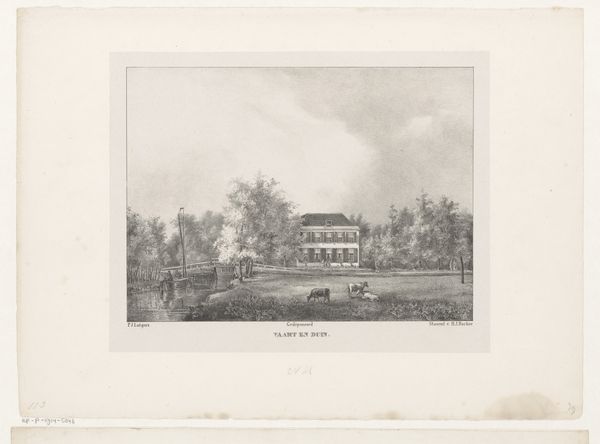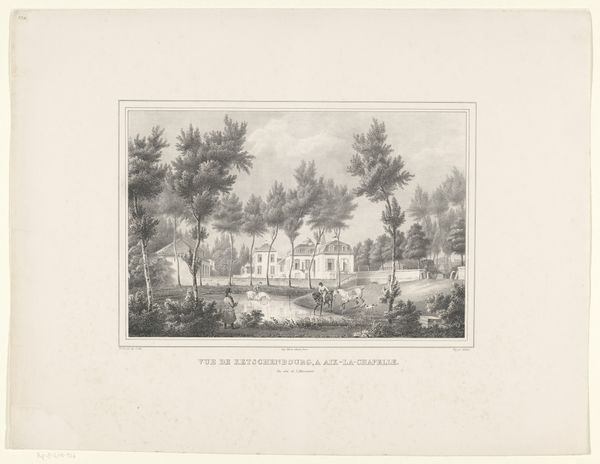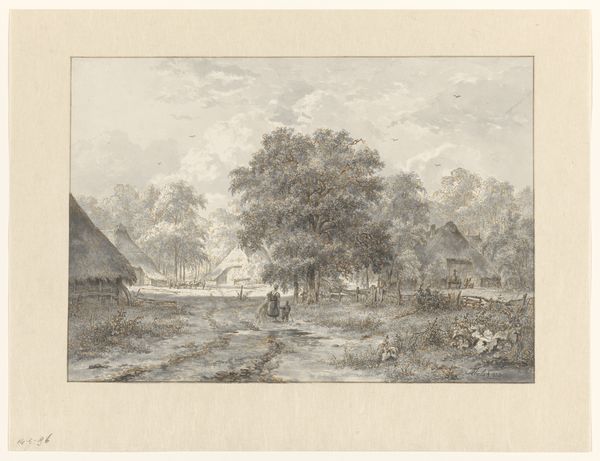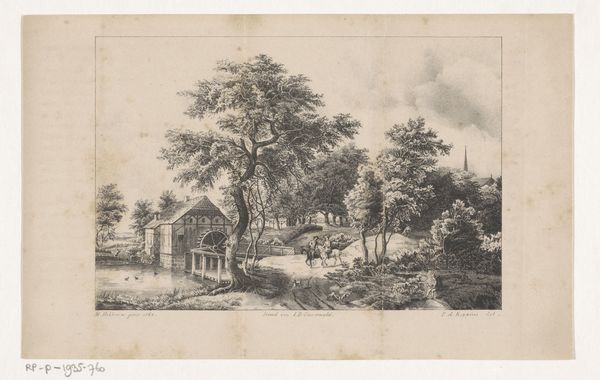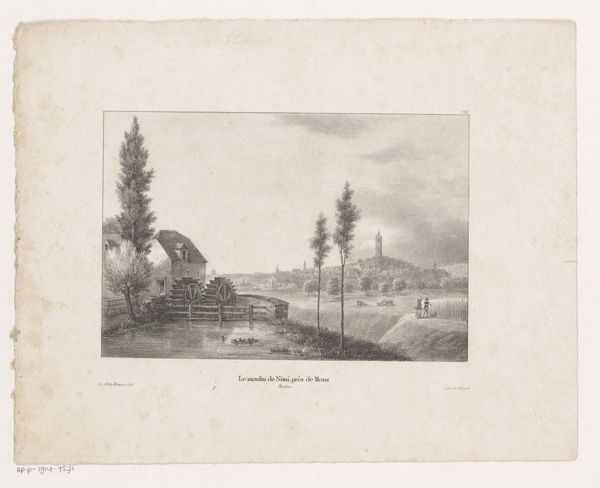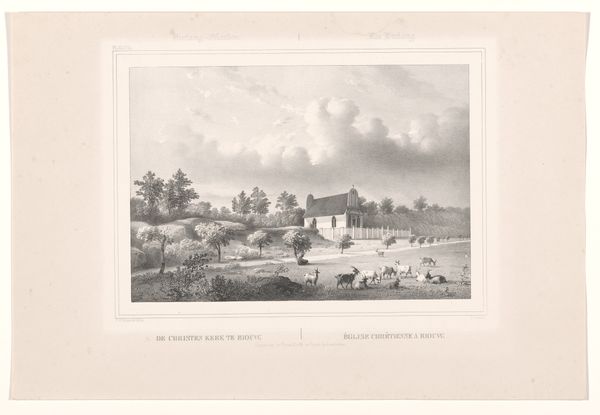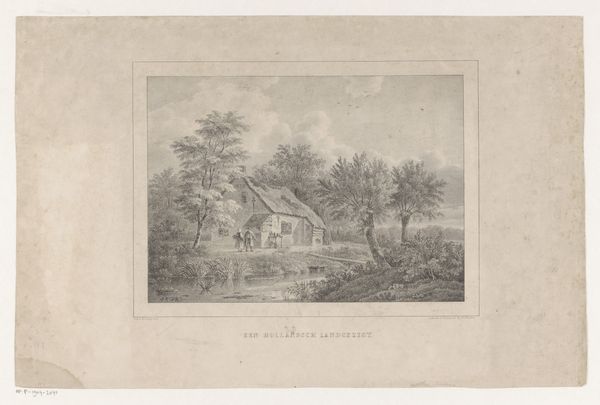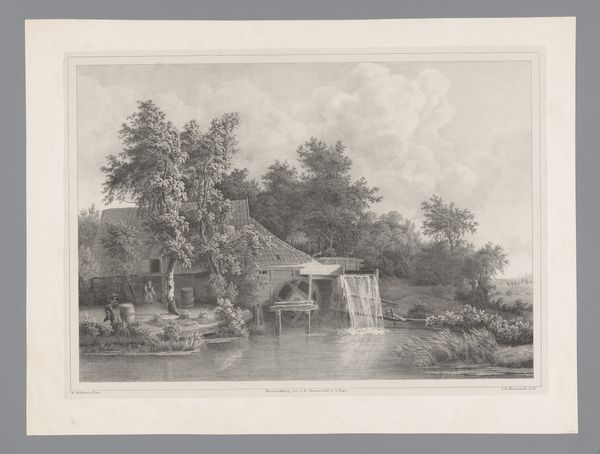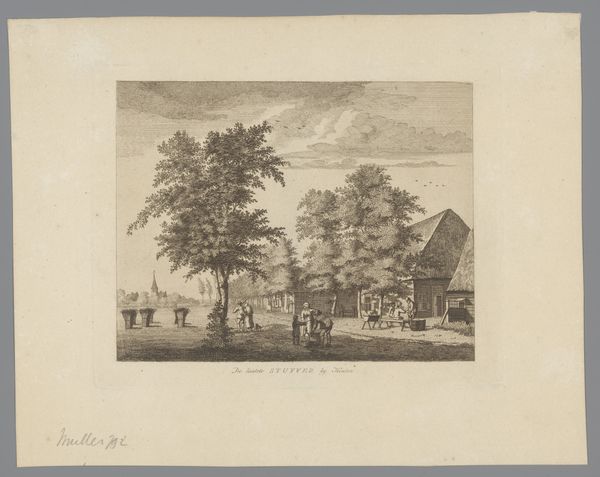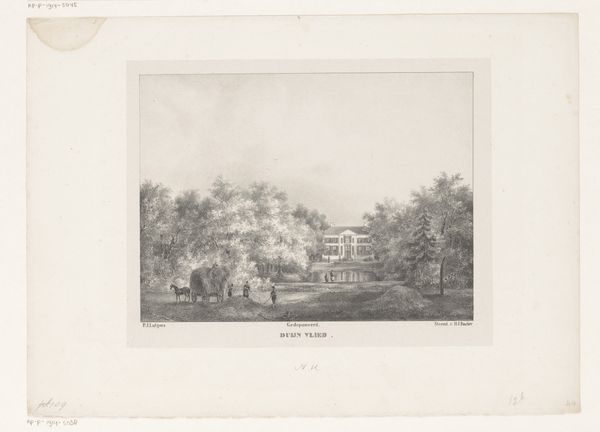
# print
#
landscape
#
romanticism
Dimensions: height 320 mm, width 440 mm
Copyright: Rijks Museum: Open Domain
Curator: Editor: This print, "Melkerij op landgoed Spaarnhove" by Barend Cornelis Koekkoek, dating from 1828 to 1830, gives off a very tranquil, romantic feeling, almost like an idealized version of rural life. What draws your eye when you look at this work? Curator: I see a very deliberate construction, both of the image and of the social reality it depicts. Note the textures achieved through printmaking: the repetitive, almost mechanical strokes that give us foliage, field, and even cloud. It emphasizes the labor involved, even in replicating a scene of apparent leisure. Editor: That's a good point, the printmaking process does lend a certain… distance. Do you think that challenges the "Romanticism" of it? Curator: Precisely! Where's the artist's hand? The direct emotional expression we often associate with Romanticism is mediated through this process of reproduction, this very visible *making*. Also, consider what a dairy farm represents – not just cows in a field, but labor, commerce, land ownership, and who gets to profit from all of that. This isn't untouched nature. Editor: I didn't initially consider how carefully crafted this idealized vision actually is. It really puts a new spin on it for me, knowing how the printmaking, the labour of image making is highlighting the other labours. Curator: Indeed! And look closer. Who benefits from the bucolic scene? What is obscured? Editor: I see that labour is occurring, but the labourers aren't necessarily central. It prompts thoughts about visibility and…who owns the milk. This has helped to move away from thinking it's *just* a nice landscape. Curator: Excellent! Now we're getting to the real "material" of the work. Editor: I'll definitely look at these pastoral scenes differently now. Thanks for broadening my view.
Comments
No comments
Be the first to comment and join the conversation on the ultimate creative platform.
